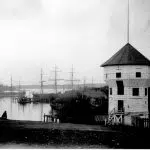
NATO holding armoured-gun competition in Latvia to test abilities of tank units
RIGA, Latvia — Although tanks have shown their limits in the war in Ukraine, they remain the centrepiece of the battlefield, Capt. Antonio Cornacchi of the Italian armed forces told The Canadian Press Thursday.
Cornacchi is in charge of the armoured-gunnery competition involving troops from 13 NATO countries — including Canada — that is taking place over four days at the Adazi base, located about 200 kilometres from the Russian border and a 45-minute drive from Riga, the capital of NATO member Latvia.
The military exercises — dubbed Iron Spear — involve multinational NATO battle group eFP Latvia, which serves both as a dissuasion and a shield in the event of an attack.
Thirty-four crews from 13 NATO armies are testing the striking force and manoeuvrability of tanks, as a debate rages about the relevance of armoured vehicles, following the setbacks incurred by Russian tank units in the invasion of Ukraine.


